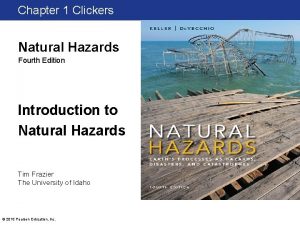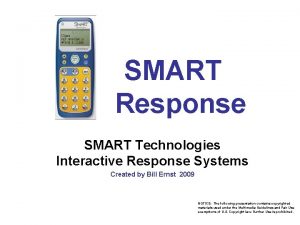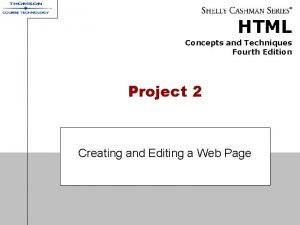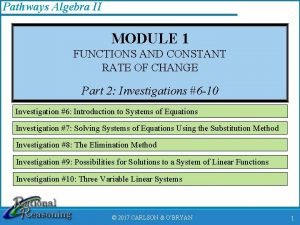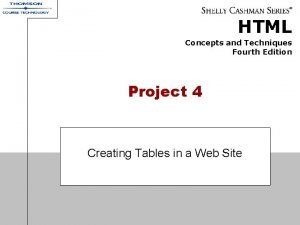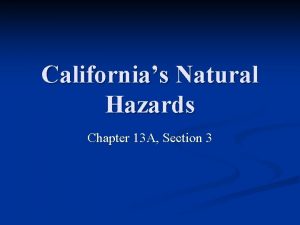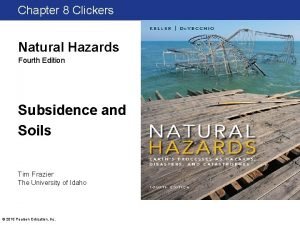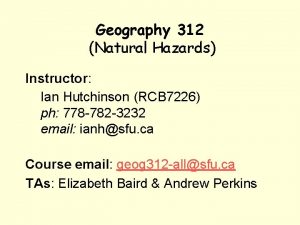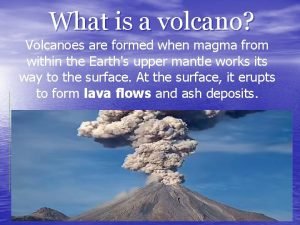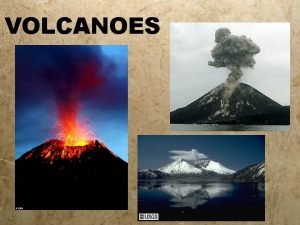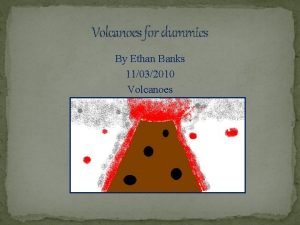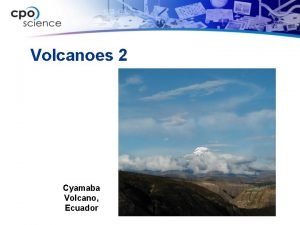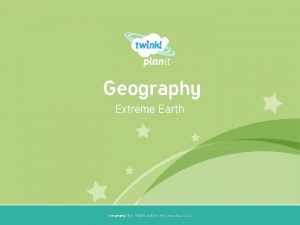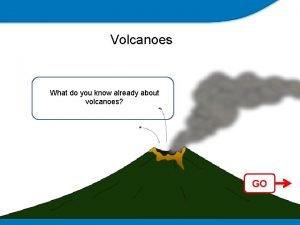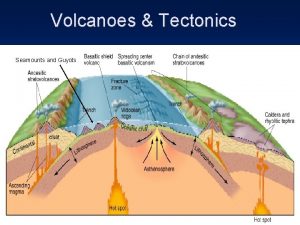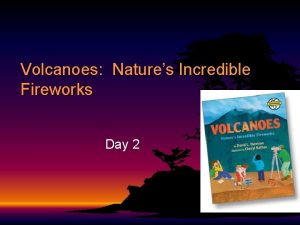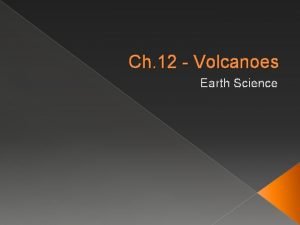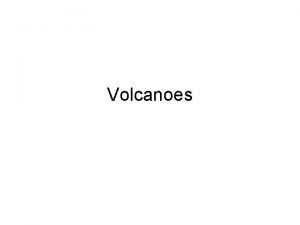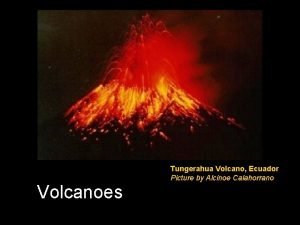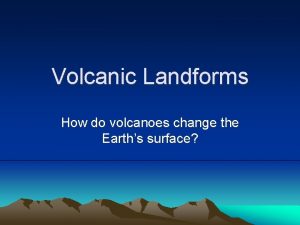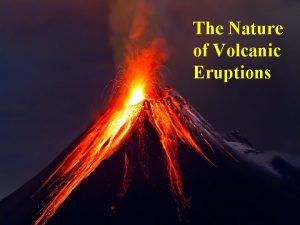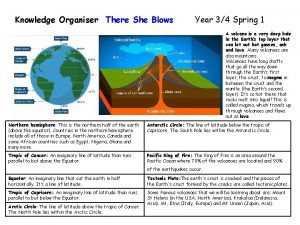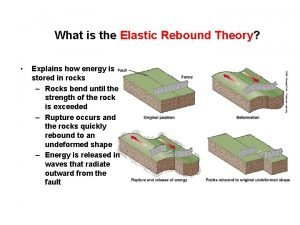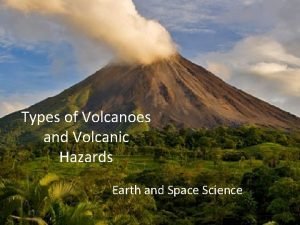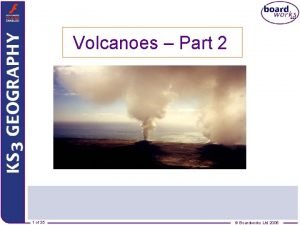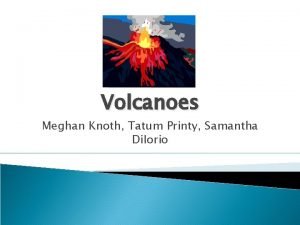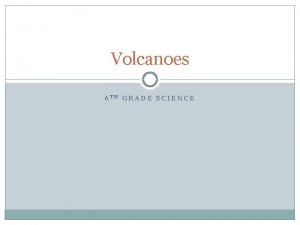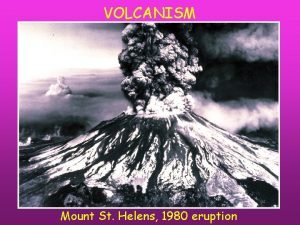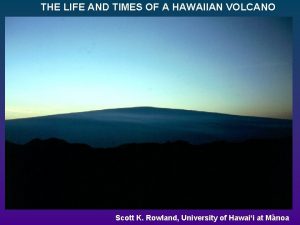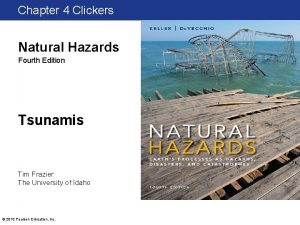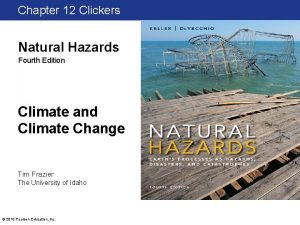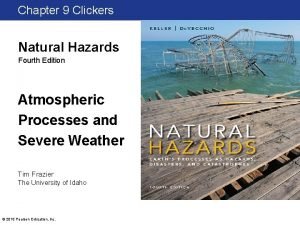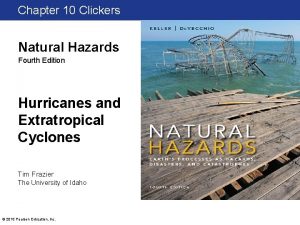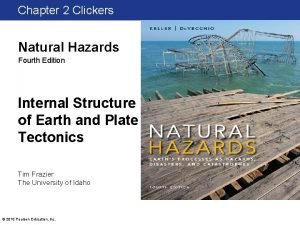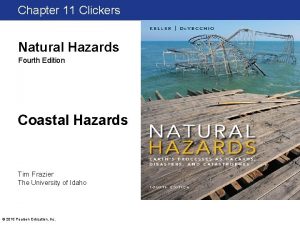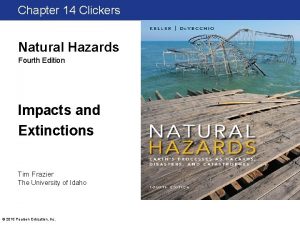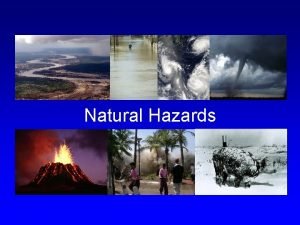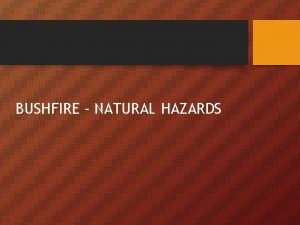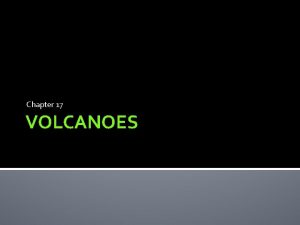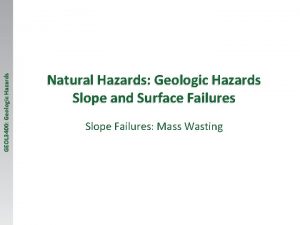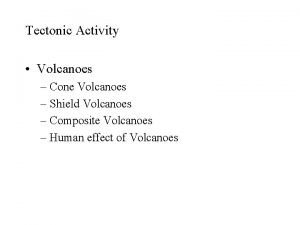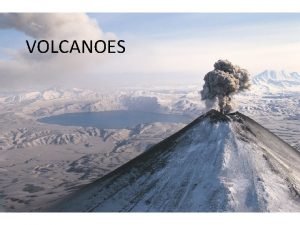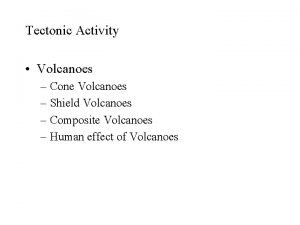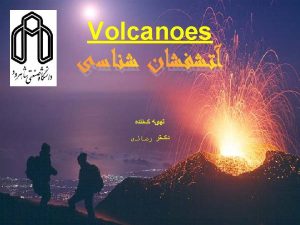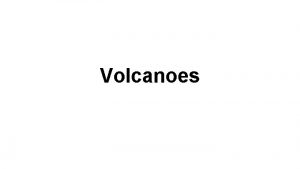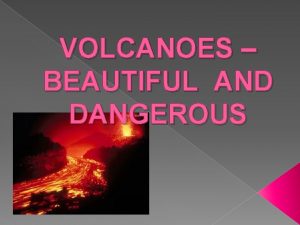Chapter 5 Clickers Natural Hazards Fourth Edition Volcanoes









































- Slides: 41

Chapter 5 Clickers Natural Hazards Fourth Edition Volcanoes Tim Frazier The University of Idaho © 2015 Pearson Education, Inc.

Approximately two-thirds of all the active volcanoes on Earth are located a) b) c) d) e) in the Atlantic Ocean. along the east coasts of continents. in the Indian Ocean. within the Ring of Fire. in Asia. © 2015 Pearson Education, Inc.

Approximately two-thirds of all the active volcanoes on Earth are located a) b) c) d) e) in the Atlantic Ocean. along the east coasts of continents. in the Indian Ocean. within the Ring of Fire. in Asia. © 2015 Pearson Education, Inc.

Magma begins to form if rocks are close to their melting temperature and the pressure from above is decreased in the process called a) b) c) d) e) addition of heat. addition of volatiles. decompression melting. subduction. None of the answers are correct. © 2015 Pearson Education, Inc.

Magma begins to form if rocks are close to their melting temperature and the pressure from above is decreased in the process called a) b) c) d) e) addition of heat. addition of volatiles. decompression melting. subduction. None of the answers are correct. © 2015 Pearson Education, Inc.

Which is not a sinking plate in the “Ring of Fire”? a) b) c) d) e) Australian Pacific Philippine Juan de Fuca Cocos © 2015 Pearson Education, Inc.

Which is not a sinking plate in the “Ring of Fire”? a) b) c) d) e) Australian Pacific Philippine Juan de Fuca Cocos © 2015 Pearson Education, Inc.

In order of increasing silica content, the three major types of magma are a) b) c) d) e) Basaltic, andesitic, rhyolitic Basaltic, rhyolitic, andesitic Rhyolitic, basaltic, andesitic Rhyolitic, andesitic, basaltic Andesitic, rhyolitic, basaltic © 2015 Pearson Education, Inc.

In order of increasing silica content, the three major types of magma are a) b) c) d) e) Basaltic, andesitic, rhyolitic Basaltic, rhyolitic, andesitic Rhyolitic, basaltic, andesitic Rhyolitic, andesitic, basaltic Andesitic, rhyolitic, basaltic © 2015 Pearson Education, Inc.

The figure shown is an example of a ______ eruption. a) b) c) d) e) stratovolcano lava dome shield volcano cinder cone continental caldera © 2015 Pearson Education, Inc.

The figure shown is an example of a ______ eruption. a) b) c) d) e) stratovolcano lava dome shield volcano cinder cone continental caldera © 2015 Pearson Education, Inc.

Crater Lake (shown in the figure) is an example of a _______. a) b) c) d) e) stratovolcano lava dome shield volcano cinder cone continental caldera © 2015 Pearson Education, Inc.

Crater Lake (shown in the figure) is an example of a _______. a) b) c) d) e) stratovolcano lava dome shield volcano cinder cone continental caldera © 2015 Pearson Education, Inc.

Tsunamis, fires, landslides, and debris flows are all examples of ____ of volcanic activity. a) b) c) d) e) major effects minor effects primary effects secondary effects tertiary effects © 2015 Pearson Education, Inc.

Tsunamis, fires, landslides, and debris flows are all examples of ____ of volcanic activity. a) b) c) d) e) major effects minor effects primary effects secondary effects tertiary effects © 2015 Pearson Education, Inc.

The Roman towns of Pompeii and Herculaneum were destroyed from the _______ of Mount Vesuvius. a) b) c) d) e) magma pyroclastic flow landslides ash fall lahar © 2015 Pearson Education, Inc.

The Roman towns of Pompeii and Herculaneum were destroyed from the _______ of Mount Vesuvius. a) b) c) d) e) magma pyroclastic flow landslides ash fall lahar © 2015 Pearson Education, Inc.

© 2015 Pearson Education, Inc.

The figures on the previous slide show the before and after of what volcano? a) b) c) d) e) Mount Unzen Mount Mazama Mount St. Helens Mount Vesuvius Mauna Loa © 2015 Pearson Education, Inc.

The figures show the before and after of what volcano? a) b) c) d) e) Mount Unzen Mount Mazama Mount St. Helens Mount Vesuvius Mauna Loa © 2015 Pearson Education, Inc.

© 2015 Pearson Education, Inc.

The shaded areas on the map show the _______ of the three labeled volcanoes. a) b) c) d) e) lahar paths ash fallout areas earthquake areas lava flows All of the answers are correct. © 2015 Pearson Education, Inc.

The shaded areas on the map show the _______ of the three labeled volcanoes. a) b) c) d) e) lahar paths ash fallout areas earthquake areas lava flows All of the answers are correct. © 2015 Pearson Education, Inc.

The “year without a summer” in New England was a result of the Tambora volcano creating what? a) b) c) d) e) local tsunami global cloud of sulfuric acid droplets global earthquake global cloud of silica © 2015 Pearson Education, Inc.

The “year without a summer” in New England was a result of the Tambora volcano creating what? a) b) c) d) e) local tsunami global cloud of sulfuric acid droplets global earthquake global cloud of silica © 2015 Pearson Education, Inc.

What is a natural service function that volcanoes provide? a) b) c) d) e) Provide excellent growth medium for plants Create power for nearby urban areas Host minerals in volcanic rocks Provide recreational activities All are natural service functions of volcanoes. © 2015 Pearson Education, Inc.

What is a natural service function that volcanoes provide? a) b) c) d) e) Provide excellent growth medium for plants Create power for nearby urban areas Host minerals in volcanic rocks Provide recreational activities All are natural service functions of volcanoes. © 2015 Pearson Education, Inc.

What type of information is NOT used in forecasting volcanic eruptions? a) b) c) d) e) Monitoring the atmospheric pressure Monitoring volcanic gas emissions Monitoring seismic activity Monitoring thermal, magnetic, and hydrologic conditions Monitoring the land surface for tilting or swelling of the volcano © 2015 Pearson Education, Inc.

What type of information is NOT used in forecasting volcanic eruptions? a) b) c) d) e) Monitoring the atmospheric pressure Monitoring volcanic gas emissions Monitoring seismic activity Monitoring thermal, magnetic, and hydrologic conditions Monitoring the land surface for tilting or swelling of the volcano © 2015 Pearson Education, Inc.

_____ and _____ are significant factors in a person’s knowledge of the hazard and possible adjustments to it. a) b) c) d) e) Age; level of education Age; length of residence near hazard Level of education; amount of family in the area Age; amount of family in the area © 2015 Pearson Education, Inc.

_____ and _____ are significant factors in a person’s knowledge of the hazard and possible adjustments to it. a) b) c) d) e) Age; level of education Age; length of residence near hazard Level of education; amount of family in the area Age; amount of family in the area © 2015 Pearson Education, Inc.

Lava and other volcanic materials are extruded on to the surface through a a) b) c) d) e) plate boundary. geyser. lava tube. volcanic vent. deep-sea trench. © 2015 Pearson Education, Inc.

Lava and other volcanic materials are extruded on to the surface through a a) b) c) d) e) plate boundary. geyser. lava tube. volcanic vent. deep-sea trench. © 2015 Pearson Education, Inc.

The largest type of volcanoes – common in the Hawaiian Islands, Iceland, and in the East African Rift – are _______ volcanoes. a) b) c) d) e) shield cinder cone lava dome stratovolcano continental caldera © 2015 Pearson Education, Inc.

The largest type of volcanoes – common in the Hawaiian Islands, Iceland, and in the East African Rift – are _______ volcanoes. a) b) c) d) e) shield cinder cone lava dome stratovolcano continental caldera © 2015 Pearson Education, Inc.

All of the following are direct hazards of ash fall except a) b) c) d) e) aircraft engine “flame out” richer farming soil contamination of surface water irritation of the respiratory system damage to buildings © 2015 Pearson Education, Inc.

All of the following are direct hazards of ash fall except a) b) c) d) e) aircraft engine “flame out” richer farming soil contamination of surface water irritation of the respiratory system damage to buildings © 2015 Pearson Education, Inc.

If the _______ of the Yellowstone and Long Valley eruptions were experienced today, it would devastate the U. S. economy and food production capabilities, as well as have negative impacts on global climate change. a) b) c) d) e) ash fall lahar landslides magma pyroclastic flow © 2015 Pearson Education, Inc.

If the _______ of the Yellowstone and Long Valley eruptions were experienced today, it would devastate the U. S. economy and food production capabilities, as well as have negative impacts on global climate change. a) b) c) d) e) ash fall lahar landslides magma pyroclastic flow © 2015 Pearson Education, Inc.

What method was used on the Icelandic Island of Heimaey to deflect the lava flow from the main town? a) b) c) d) e) Wall construction Levees Addition of volatiles Hydraulic chilling Decompression melting © 2015 Pearson Education, Inc.

What method was used on the Icelandic Island of Heimaey to deflect the lava flow from the main town? a) b) c) d) e) Wall construction Levees Addition of volatiles Hydraulic chilling Decompression melting © 2015 Pearson Education, Inc.
 Natural hazards 4th edition
Natural hazards 4th edition Natural hazards vs natural disasters
Natural hazards vs natural disasters Smart response system
Smart response system China classroom clickers
China classroom clickers Project 2 fourth edition
Project 2 fourth edition Pathways algebra 2 answer key
Pathways algebra 2 answer key Ethics in information technology fourth edition
Ethics in information technology fourth edition Ethics in information technology 6th edition answers
Ethics in information technology 6th edition answers Vertical line code in html
Vertical line code in html A computer programming team has 13 members
A computer programming team has 13 members Expert systems: principles and programming, fourth edition
Expert systems: principles and programming, fourth edition Chapter 8 earthquakes and volcanoes
Chapter 8 earthquakes and volcanoes California natural hazards
California natural hazards How does the study of soils help evaluate natural hazards?
How does the study of soils help evaluate natural hazards? Why is canada rarely impacted by natural weather hazards
Why is canada rarely impacted by natural weather hazards Geog 312 sfu
Geog 312 sfu Mis chapter 6
Mis chapter 6 Zulily case study
Zulily case study How do volcanoes work
How do volcanoes work How are volcanoes classified
How are volcanoes classified Volcanoes for dummies
Volcanoes for dummies Where do most volcanoes occur
Where do most volcanoes occur Extreme earth
Extreme earth What do you already know about volcanoes?
What do you already know about volcanoes? Three main ways volcanoes are created
Three main ways volcanoes are created Volcanoes nature's incredible fireworks
Volcanoes nature's incredible fireworks Types of volcanoes
Types of volcanoes How are volcanoes formed
How are volcanoes formed Most volcanoes occur __________. *
Most volcanoes occur __________. * Active volcanoes map
Active volcanoes map Krakatau volcano
Krakatau volcano Paricutin materials extruded
Paricutin materials extruded Volcanoes knowledge organiser
Volcanoes knowledge organiser Explain the elastic rebound theory.
Explain the elastic rebound theory. Types of volcanoes
Types of volcanoes Ring of fire volcanoes
Ring of fire volcanoes Types of volcanoes according to shape
Types of volcanoes according to shape Lava and magma difference
Lava and magma difference Factors affecting volcanic eruption
Factors affecting volcanic eruption Name volcanoes
Name volcanoes Where are volcanoes
Where are volcanoes A'a hawaiian
A'a hawaiian
